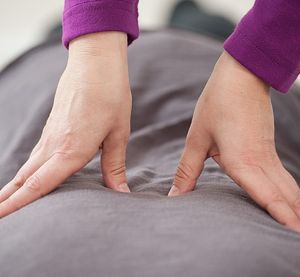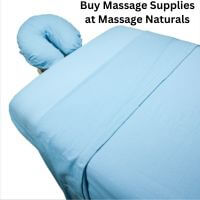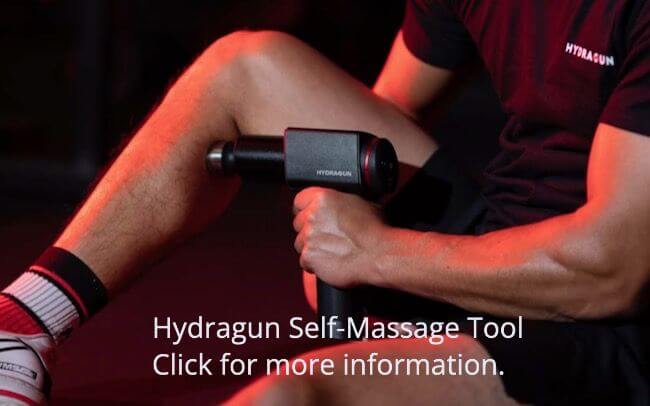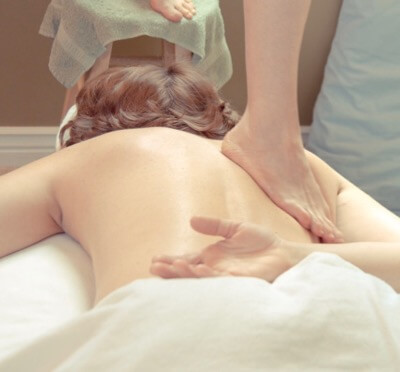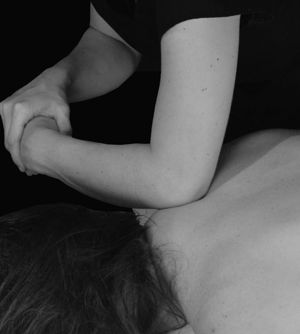- Home
- Massage Types
- Acupressure Massage
As an Amazon Associate and affiliate with other programs, I may earn revenue from qualifying purchases through affiliate links. This does not affect the price you pay. Privacy Policy / Disclosures. This site is for educational purposes only.
**Sign up for my monthly newsletter and receive a free aromatherapy ebook.**
What is Acupressure Massage?
The use of the term acupressure massage isn't accurate because acupressure isn't massage in the Western sense. Acupressure is an Asian bodywork therapy based on the same energy principles used in acupuncture. Practitioners use pressure instead of needles on the points (acupoints), which are located on energy lines called meridians.
The body has 12 major meridians, and many acupressure points are located on these meridians:
- Lung (Lu)
- Large intestine (LI)
- Stomach (St)
- Spleen (Sp)
- Heart (H)
- Small intestine (SI)
- Bladder (B)
- Kidney (K)
- Pericardium (P)
- Triple Warmer (TW)
- Gall Bladder (GB)
- Liver (Lv)
- Conception vessel (CV)
- Governing vessel (GV)
Specific points are identified with a number, for example, GB 14 or St 3, and also with a Chinese name. The location of an acupoint is described in relation to parts of the body, often bones or muscles. For example, the two GB 14 points are located on the forehead, directly above the pupils of the eyes, one finger width above the eyebrow. A finger width is also called a cun. You can buy acupressure charts.
The use of acupoints began to develop over 5,000 years ago in China. Life energy (chi or qi) flows through the meridians, according to Traditional Chinese Medicine. In a healthy person, energy flows freely, while blocked energy leads to illness. Applying pressure to points promotes the energy flow.
In Western terms, acupressure points are places on the skin that are especially sensitive to bioelectrical impulses and readily conduct these impulses, states Acupressure's Potent Points.
How Does Acupressure Work?
Stimulating acupressure points releases pain-relieving neurochemicals called endorphins, according to Basic Acupressure: Extraordinary Channels & Points by expert Michael Reed Gach. Some research supports this assertion.
Gach explains that muscle tension tends to accumulate around acupressure points. Pressing the points causes the muscles to elongate and relax, allowing blood to flow freely, and releasing and eliminating waste products. Increased circulation also brings oxygen and other nutrients to surrounding areas, promoting stronger resistance to illness and a longer, healthier, and more vital life.
Practically, the potential benefits of acupressure massage include helping relieve headaches, back problems, menstrual cramps, and other types of pain. The technique also supports the immune system and helps reduce anxiety, promote relaxation, and improve sleep quality.
Acupressure may also restore emotional balance by releasing accumulated tensions caused by repressed feelings. Properly circulating blood, oxygen, and bioelectric energy brings a greater sense, of harmony, health, and well-being.
"Whether to relieve pain or muscular discomfort or to prevent illness, acupressure techniques are intended to correct imbalance, working toward the regulation and harmony of all systems of the body," states Gach.
What is Acupressure Massage and Its Techniques?
The most well-known type of acupressure is shiatsu, which originated in Japan. Shiatsu can be quite vigorous, with firm pressure applied to each point for only three to five seconds. Variations include zen shiatsu, which also incorporates stretches and rhythmic breathing. and barefoot shiatsu, where practitioners use their feet to press points.
In contrast, in Jin Shin, the practitioner gently holds two points simultaneously for a minute or more.
Tuina Chinese massage also incorporates the use of acupoints, along with other massage techniques.
What is Acupressure Massage Technique?
Acupressure techniques range from light touch or tapping to steadily holding firm pressure on the points.
Holding firm, steady pressure on a point is the best known acupressure technique. One minute of gradually applied pressure calms and relaxes the nervous system, promoting healing. To stimulate, rather than relax, apply pressure for only four to five seconds, according to Acupressure's Potent Points.
Other acupressure techniques include:
- Slow kneading using the thumbs, other fingers, and hands to squeeze large muscles.
- Brisk rubbing (friction) to stimulate blood and lymph circulation.
- Quick tapping with the fingers to stimulate tender muscles.
Acupressure Points for Shoulder and Neck
For more acupressure massage points, see:
- Acupressure Points for Sinus Problems and Nasal Congestion
- Acupressure for Migraines and Headaches
- Acupressure Points for Foot Pain
Maternity Acupressure
For pregnant women, studies suggest that maternity acupressure can relieve some of the unpleasant symptoms of pregnancy and reduce pain during labor. (Note that some points shouldn't be pressed during pregnancy because they may initiate early labor.) Here's a video showing how to find maternity acupressure points:
To find a qualified acupressure practitioner, visit the practitioner directory of the American Organization for Bodywork Therapies of Asia (AOBTA).
